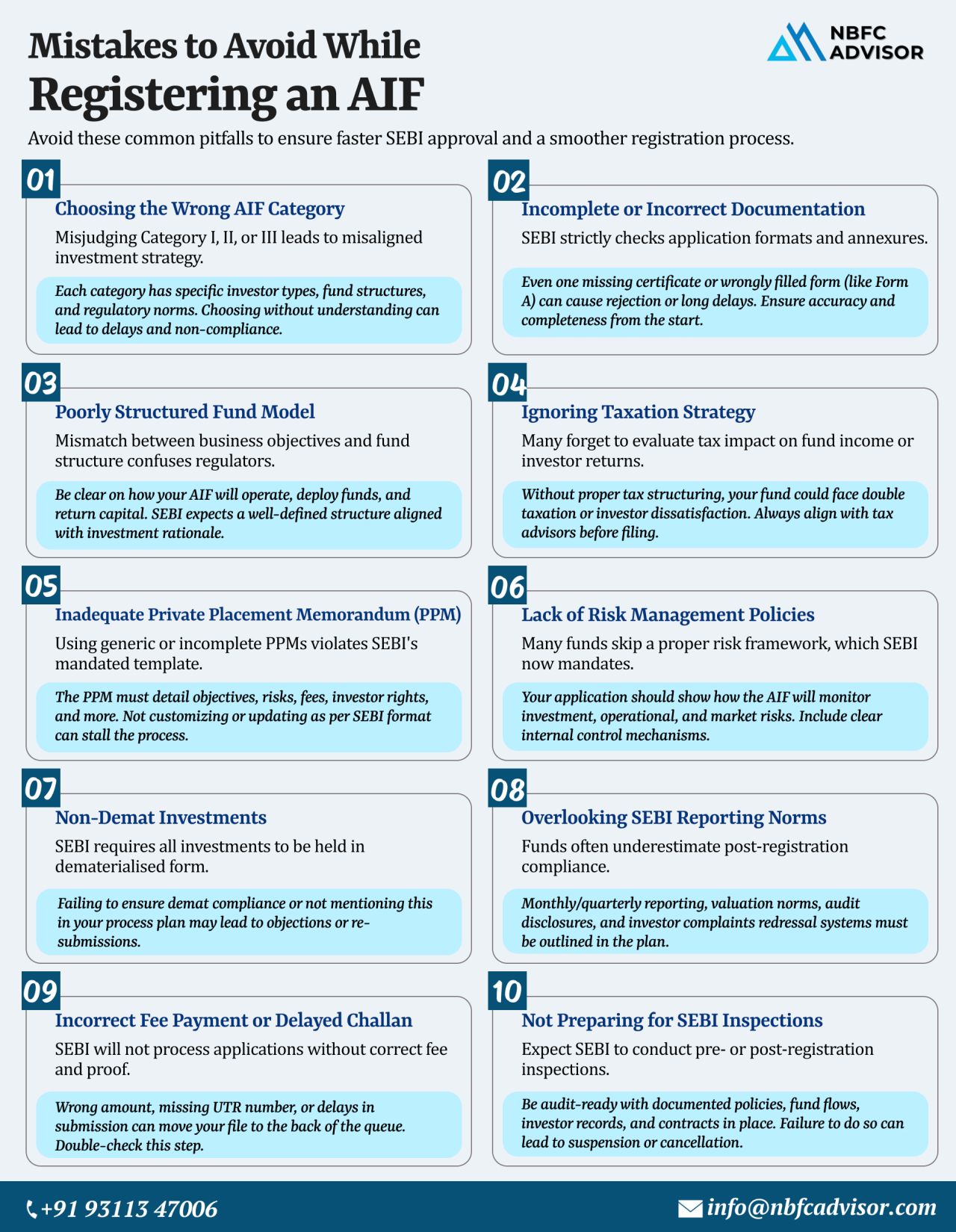Avoid These 10 Common Mistakes When Registering an AIF
Registering an Alternative Investment Fund (AIF) with SEBI is a crucial step for fund managers and institutions looking to enter India’s alternative investment space. However, the registration process involves detailed scrutiny, and even minor errors can lead to objections, delays, or rejections.
To help you navigate the process smoothly, here are the 10 most common mistakes to avoid when registering an AIF:
1. Choosing the Wrong AIF Category
Selecting an inappropriate AIF category (I, II, or III) can result in regulatory conflicts. Your fund’s investment objective and strategy must align with SEBI’s prescribed definitions to ensure compliance.
2. Incomplete or Incorrect Documentation
Accurate and complete documentation is essential. Errors or omissions in documents like the trust deed, contribution agreement, or investment strategy can cause unnecessary back-and-forth with SEBI.
3. Ambiguity in Fund Structure
Your fund’s legal structure—whether a trust, LLP, or company—must be clearly defined and consistent. Unclear structuring can raise compliance concerns during evaluation.
4. Neglecting Tax Planning
Ignoring tax implications for both the fund and its investors is a critical oversight. Strategic tax planning should be part of the initial setup to prevent future liabilities.
5. Using a Generic or Outdated Private Placement Memorandum (PPM)
Your PPM must be tailored to your fund’s specifics and updated as per SEBI norms. Submitting a templated or outdated version often leads to delays or objections.
6. Lack of a Defined Risk Management Framework
A comprehensive risk management policy is a must, especially for Category III AIFs. A vague or missing framework can lead to SEBI raising queries.
7. Failure to Comply with Demat Requirements
AIFs are required to issue units in dematerialized form. Failure to establish arrangements with recognized depositories like NSDL or CDSL can delay the approval process.
8. Overlooking SEBI’s Reporting Obligations
SEBI mandates regular quarterly and annual reporting. Many applicants are unaware of these obligations, leading to compliance gaps after registration.
9. Errors in Fee Payment or Challan Submission
Incorrect fee amounts or delayed submission of challans are common administrative errors. These small mistakes can significantly delay your application.
10. Lack of Preparation for SEBI Audits or Inspections
After registration, SEBI may conduct inspections or request periodic reviews. Without a strong compliance framework and proper recordkeeping, your fund may face scrutiny or penalties.
✅ Set Your AIF on the Right Track from the Start
Avoiding these pitfalls can save time, resources, and ensure a smoother path to SEBI approval. A meticulous, well-prepared application reflects credibility and readiness for regulatory oversight.
📞 Looking to register your AIF? We’re here to help.
Our expert team provides end-to-end assistance—from fund structuring and documentation to SEBI interaction and ongoing compliance.
👉 Book your free consultation today.
📞 +91 93113 47006
#NBFCAdvisor #AIF #SEBI #AlternativeInvestmentFund #AIFRegistration #SEBICompliance #FundManagement #InvestmentFunds #FundSetup

